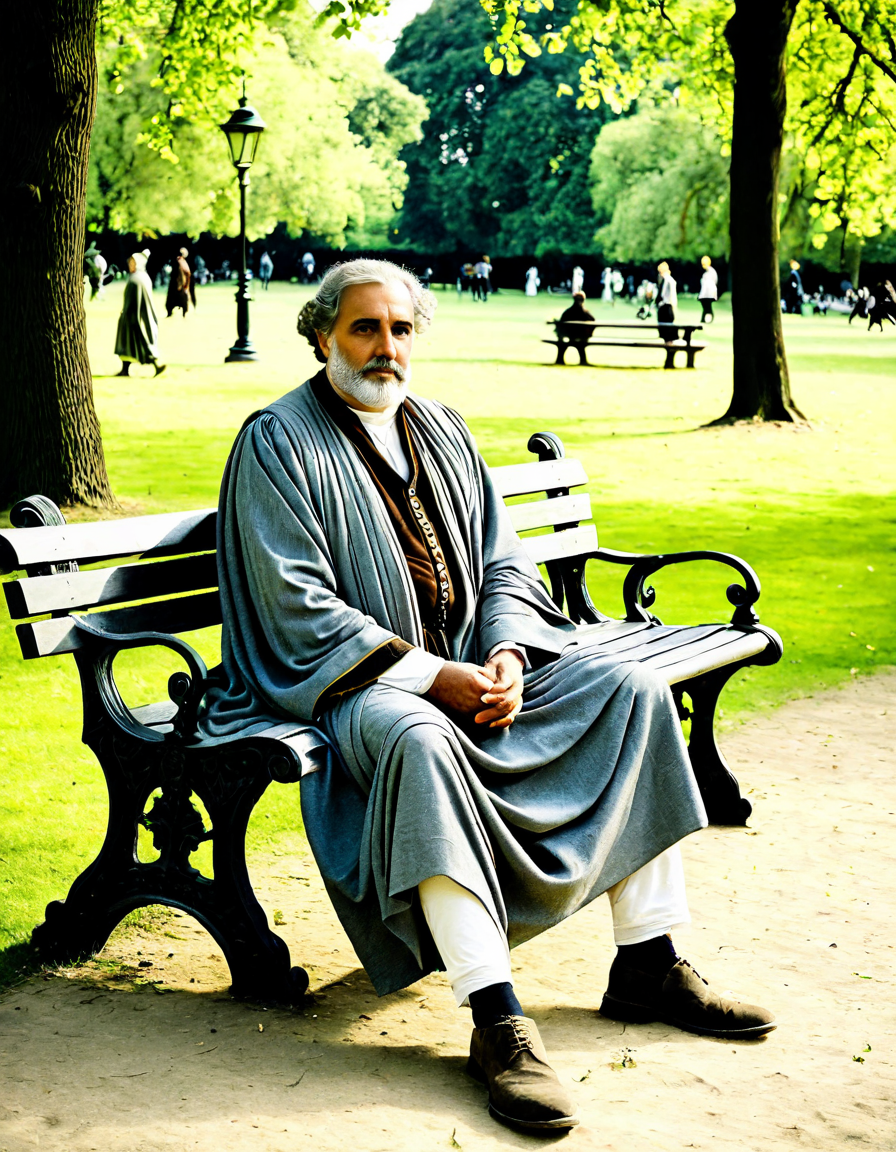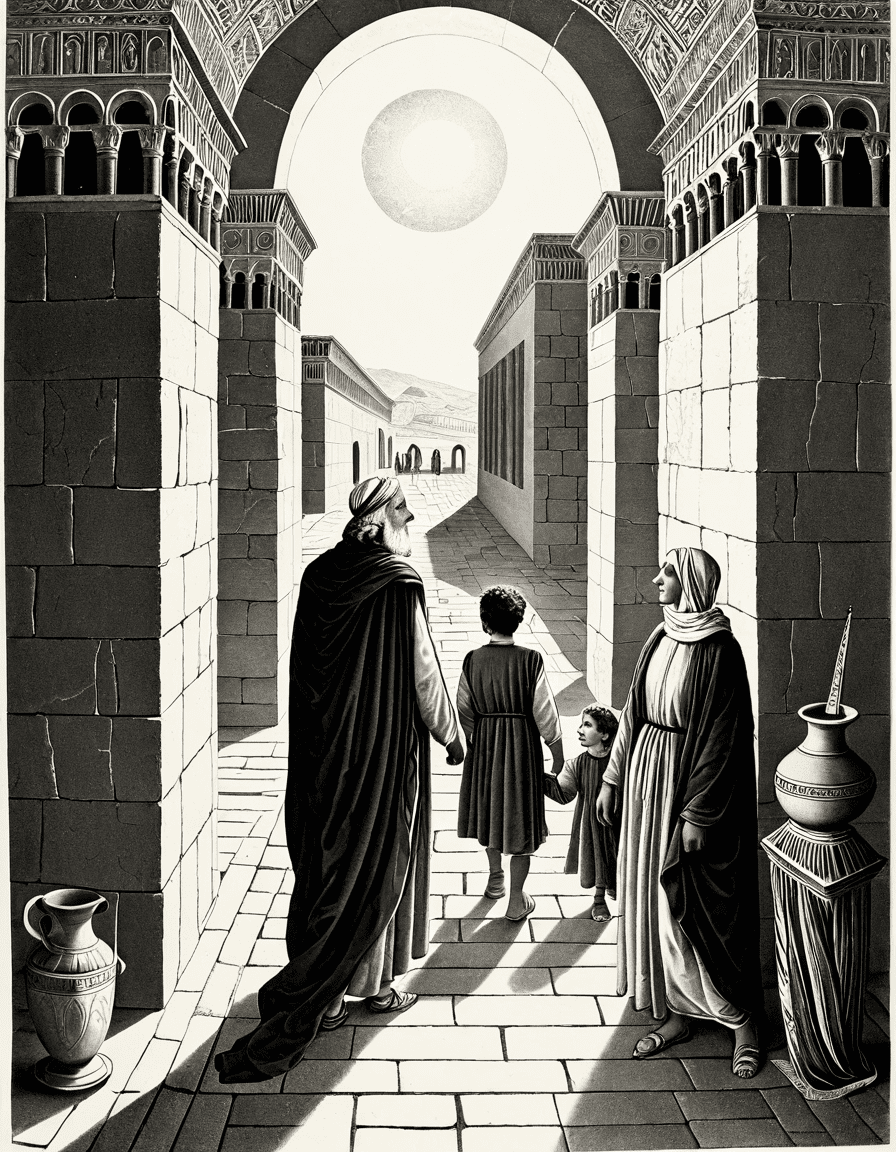In the acclaimed series The Last Days of Ptolemy Grey, we’re treated to a powerful narrative that unveils an intricate dance between memory and identity. This show goes beyond mere storytelling to explore essential themes like aging, loss, and the fragility of the human mind. Through Ptolemy’s journey, viewers experience that memory forms the very fabric of who we are, shining a light on how our past influences our present.
A poignant arc of Ptolemy’s story is the contrast between his vibrant memories and the darkness of his cognitive decline. By unpacking these key themes, we realize that Ptolemy isn’t just battling dementia; he’s also wrestling with the essence of his life, relationships, and the legacy he wishes to leave behind. This depiction resonates deeply with current societal discussions surrounding dementia and the understanding of old age, forming a bridge between the show’s narrative and real-life issues faced by many families.
In a world that often neglects its elders, The Last Days of Ptolemy Grey serves as a critical mirror, reflecting our societal attitudes towards aging. It raises questions about how we perceive the elderly and prompts us to consider how much value we place on memory and shared experiences. Ultimately, it is a reminder that behind every fading memory lies a vast universe of stories and connections, urging us to remember those narratives as we navigate our lives.

Unforgettable Characters and Their Impact: The Merry Gentlemen of Ptolemy Grey’s World
Ptolemy Grey’s world is populated with unforgettable characters who significantly impact his journey. The relationships depicted—especially with his caretaker Robyn—evoke a spectrum of emotional experiences tied to memory loss. These connections emphasize the importance of companionship as Ptolemy faces life’s twilight years.
Comparing these character dynamics to shows like How I Met Your Father, we see two very different approaches to companionship. While How I Met Your Father primarily centers around humor and the light-heartedness of young love, The Last Days of Ptolemy Grey portrays emotional connections bathed in profound sadness but also in depth. Ptolemy and Robyn’s relationship is a beacon of hope amid his deteriorating mental health, illustrating how even in the darkest moments, companionship can offer light.
The emotional weight of these relationships transcends the screen, reminding us of the importance of supporting those we love through difficult times. This nuanced portrayal of emotional complexity rivals other masterpieces, making Ptolemy’s world akin to a more profound version of some scenes from the fandom favorite Fullmetal Alchemist: Brotherhood. When we witness Ptolemy and Robyn supporting each other, we understand that companionship, even in pain, is transformative.

The Journey of Self-Discovery in The Last Days of Ptolemy Grey
While Ptolemy grapples with memory loss, The Last Days of Ptolemy Grey explores his journey of self-discovery amidst the chaos. Unlike typical narratives signaling a straightforward path, the story intertwines moments of transformation with the trials of aging. His character’s development reflects a realization that self-discovery doesn’t come to an end; it may simply evolve as life takes different turns.
Many thematic elements echo popular coming-of-age stories, akin to the hit series The Summer I Turned Pretty. Just like its characters undergo transformations in the face of love and identity, Ptolemy’s journey reveals layers of his history that shape who he is. Specific scenes show how even with memory lapses, Ptolemy’s essence remains intact, leading to pivotal realizations about love, loss, and regret. Through these deeply moving moments, we connect with both young and older audiences alike, showing that the quest for self-understanding knows no age limits.
Emphasizing emotional resonance, Ptolemy’s narrative teaches us that life is not just about preserving memories but blooming from them. By illustrating the intertwining of past and present, the show reinforces that age doesn’t limit self-discovery. It becomes clear that even through the fog of forgetfulness, there lies a spark of something profoundly human.
Feet in a Mile: The Broader Implications of Memory and Aging on Society
The implications of memory and aging depicted in The Last Days of Ptolemy Grey stretch far beyond Ptolemy’s personal story. Society often holds prejudices against the elderly, leading to misconceptions and sometimes outright neglect. Ptolemy’s struggles challenge these perceptions, offering a rich opportunity for viewers to understand the reality of cognitive decline.
Research shows historical trends in elder care and age-related illnesses reveal gaps in our societal responses. For example, studies highlight that individuals suffering from dementia often feel isolated, with emotional support being scarce. The Last Days of Ptolemy Grey sheds light on these societal trends, urging us to rethink how we support aging populations.
In today’s world—with a significantly growing elderly demographic—media portrayals like this one become crucial. They influence public attitudes towards elder care, fostering empathy and prompted action. By emphasizing real-life struggles through Ptolemy’s eyes, the series encourages viewers to consider how we can all contribute to a more compassionate society.
Cinematic Techniques: How Visual Storytelling Shaped The Last Days of Ptolemy Grey
Visual storytelling in The Last Days of Ptolemy Grey plays a pivotal role in enhancing the narrative. The cinematography, sound design, and editing draw viewers into Ptolemy’s world, blending his past with his present seamlessly. This artistic approach deepens the emotional impact, helping us feel the weight of his memories.
A keen use of color palettes and lighting reflects Ptolemy’s emotional state, accentuating the highs and lows of his experiences. Consistently, muted colors depict moments of confusion and despair, while warmer tones illuminate scenes filled with connection and love. This contrasts sharply with visually striking series like Yellowstone, where vibrant landscapes symbolize freedom and adventure. In comparison, The Last Days of Ptolemy Grey opts for a more muted aesthetic, mirroring the heartaches of aging and loss.
Moreover, the seamless transition between timelines employs editing tactics that reinforce the narrative’s emotional resonance. This technique results in a profound viewing experience that captures the essence of what it means to grapple with memory and identity effectively. The synergy between sound and visuals continually immerses the audience, making every moment impactful.
The Reception: How Critics and Audiences Received Ptolemy’s Story
The public reception of The Last Days of Ptolemy Grey reflects a spectrum of opinions, filled with both praise and challenging critiques. Critics highlight the show’s ability to balance emotional depth with relatable storytelling, positioning it as a standout in today’s television landscape. Notable publications like The Hollywood Reporter commend the series for its poignant exploration of aging.
On platforms like Rotten Tomatoes, audiences have expressed varied interpretations of the show, with generational differences in responses. Younger viewers often view Ptolemy’s struggles as a lesson in empathy and understanding, while older audiences resonate with the more profound sentiments surrounding memory loss. This divergence illustrates how The Last Days of Ptolemy Grey transcends mere entertainment to ignite crucial conversations about aging.
By dissecting critics’ perspectives alongside audience reviews, one can grasp how varied these interpretations are. This complexity does not undermine the narrative’s legacy; rather, it enhances its significance, prompting a deep reflection on memory, life, and the essence of love.
A Lasting Legacy: The Continued Relevance of Ptolemy Grey’s Story
As we reflect on the emotional weight and cultural significance of The Last Days of Ptolemy Grey, it becomes clear that its exploration of memory transcends mere storytelling and taps into the fabric of human experience. As discussions surrounding dementia and aging continue to evolve, Ptolemy’s journey remains a poignant reminder of the stories behind every fading memory.
This narrative not only offers us a glimpse into aging but also teaches us the importance of preserving relationships and demonstrating empathy for those undergoing the trials of life’s twilight years. The story of Ptolemy Grey resonates, urging society to reconsider their connection to memory.
In this age where conversations about aging and memory are becoming increasingly vital, The Last Days of Ptolemy Grey stands as a beacon. It beckons us to listen closely, embrace the complexities of our relationships, and honor the narratives of our elders—those who have shaped our lives through their experiences and memories.
The Last Days of Ptolemy Grey in Stunning Detail
A Glimpse into the Life of Ptolemy Grey
When diving into the last days of Ptolemy Grey, viewers are transported into a vivid narrative that captures the essence of memory, struggle, and hope. Ptolemy’s character, portrayed by the talented Samuel L. Jackson, embodies resilience, forcing us to confront the fragility of life. Interestingly, Jackson’s extensive filmography includes a thrilling range of genres, from iconic superhero flicks to gripping dramas—much like his co-star Eva Longoria, known for her illustrious movies and TV shows that bring characters to life.
Now, here’s a fun tidbit: you might be surprised to learn that Samuel L. Jackson also has a passion for golf, a sport that, interestingly enough, has seen its fair share of dramatic moments similar to the gripping narrative of The Last Days of Ptolemy Grey. Like Jackson, one can find characters filled with struggles and triumphs in Fma brotherhood, a notable anime that illustrates the complexities of human emotion through an engaging storyline.
Beyond the Screen: Cultural Echoes
In the last days of Ptolemy Grey, the themes resonate far beyond the screen. The narrative explores deep-rooted fears and emotional depths that many can relate to, mixing humor and tenderness brilliantly. Just like the universally relatable themes found in Seth Rogan’s movies, these elements make the story compelling and memorable. Interestingly, there’s a parallel to the quaint charm of places like Newcastleton—offering a vibrant community that echoes the collective experience of family and belonging, much like Ptolemy’s journey.
Moreover, as the story unfolds, expect unexpected moments that tug at your heartstrings, reminiscent of those found in The Unbreakable boy. It emphasizes hope and resilience in those waning moments of clarity, much like how snapshots from Yellowstone National Park capture the beauty and impermanence of life, mirroring Ptolemy’s poignant journey.
The Impact of Memory
Memory plays a monumental role in the last days of Ptolemy Grey, becoming a character in its own right. As Ptolemy grapples with his fading recollections, viewers are invited to reflect on their own experiences and memories. Just as Richard Gere’s movies often delve into personal relationships and emotional struggles, Ptolemy’s tale urges audiences to appreciate what they might take for granted.
To keep the intrigue alive throughout the series, unexpected plot twists make it a thrilling watch—akin to the unexpected turns in the lives of Kiernan Shipka’s characters in her movies and TV shows. It’s a reminder that, like in life, everything can shift in the blink of an eye. So, if you’re looking for a story that combines depth and heart with a touch of whimsy, the last days of Ptolemy Grey is waiting to be explored, bringing an emotional punch that lingers long after the credits roll.




